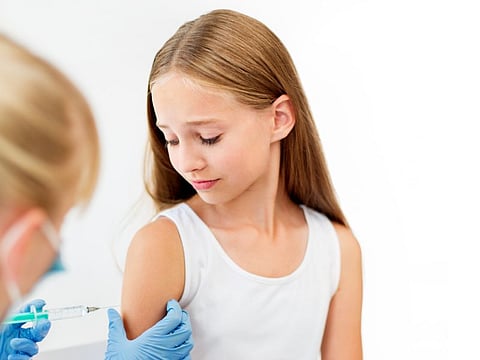THURSDAY, April 18, 2019 (HealthDay News) -- The human papillomavirus (HPV) vaccine is largely responsible for a decline in precancerous cervical lesions among young women in the United States, a new government report shows.
The number of these precancerous lesions detected during screening went down from an estimated 216,000 cases in 2008 to 196,000 cases in 2016, researchers from the U.S. Centers for Disease Control and Prevention found.
This reduction occurred solely in women under the age of 30, the age group for which the HPV vaccine has been available.
About 55% of cervical pre-cancers were found in women under 30 in 2008. By 2016, that percentage had slipped to 36%.
At the same time, precancerous lesion detection increased for those between the ages of 30 and 64.
"As these [lesions] decrease for vaccinated women, we will also see decreased cervical cancer rates in this population as it ages," said Dr. Jennifer Wu, an ob-gyn at Lenox Hill Hospital in New York City. "The hope for the next 10 years of the HPV vaccine is to see even more significant decreases in pre-cancers and cancers."
The HPV vaccine first became available in 2006 and initially was recommended for girls aged 11 or 12, with catch-up vaccination available through age 26. It has since been added to boys' standard vaccination schedule as well.
The U.S. Food and Drug Administration also approved the vaccine for adults aged 27 to 45 as of October 2018, Wu noted.
"This expanded coverage should lead to cervical cancers and pre-cancers becoming a rarity," Wu said.
The first vaccine targeted HPV strains responsible for about 70% of all cervical cancers, explained Debbie Saslow, senior director of women's cancers at the American Cancer Society.
An updated vaccine introduced in 2016 now prevents HPV strains responsible for more than 90% of cervical cancers, Saslow added.
For this new study, CDC researchers tracked cervical cancer screening in five surveillance network locations across the United States, and made estimates for the entire nation based on that data.
Some of the observed decrease could be due to changes in screening, experts said.
In 2008, girls were urged to undergo a pap smear within three years of starting sexual activity or by age 21, with annual screenings afterward.
Guidelines have evolved, and now screening starts at 21 and occurs every three years.
"Some of the decrease may reflect the fact that we're looking less frequently, particularly in that earlier age group," said Dr. Lois Ramondetta, a professor of gynecologic oncology at the University of Texas MD Anderson Cancer Center.
But the decreases in precancerous lesions among younger women points to the success of HPV vaccination, she added.
"The fact you can link the decrease to the HPV types 16 and 18, which were the subtypes covered by the initial vaccine, is indicating that it is related to vaccination," Ramondetta said. "We already know that the ability to find these types of HPV in the vaccinated age group, girls and boys, has decreased by up to 70%."
HPV vaccination rates are increasing by an average 5% annually, Saslow added.
About half of teenagers were up to date on the HPV vaccine in 2017, and two-thirds had received the first dose of the two-dose series, the CDC says.
"More parents are getting their kids vaccinated than don't get their kids vaccinated, but it's still not as high as other vaccines," Saslow said.
Doctors and other experts still have to make the case that the vaccine is safe and effective, and that it is aimed at preventing cervical cancer rather than promoting sexual activity.
"It's amazing that some people can still try to claim that this vaccine doesn't work, because it's almost every week we see more evidence that it works so much better than any of us even dreamed," Saslow said. "We have more and more and more evidence that this vaccine is drastically and dramatically decreasing the number of pre-cancers from cervical cancer.
"These numbers are going to get even better," Saslow concluded. "We have more kids being vaccinated at the right age with a better vaccine."
The new study was published April 19 in the CDC's Morbidity and Mortality Weekly Report.
More information
The U.S. Centers for Disease Control and Prevention offers more about HPV vaccination coverage.



